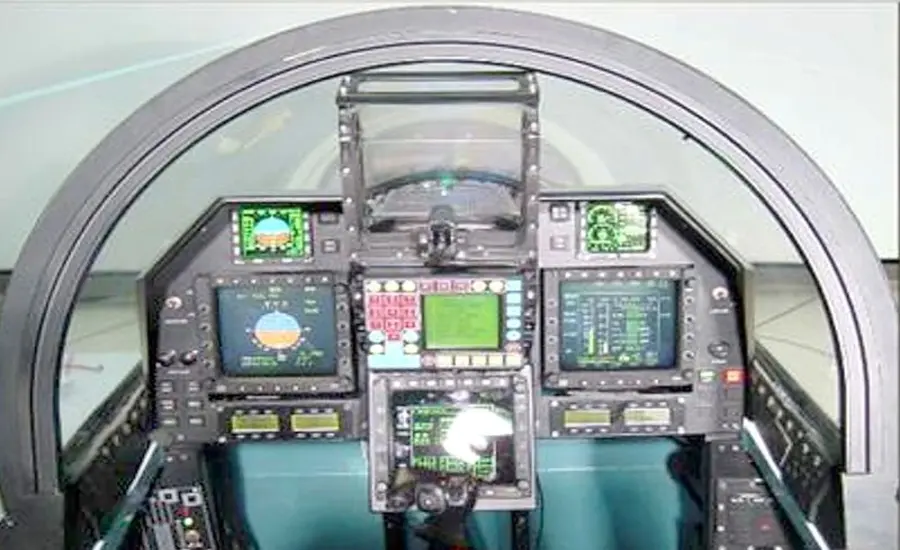New Delhi: In a major stride for Indian defence technology, the Central Scientific Instruments Organisation (CSIO) under the Council of Scientific and Industrial Research (CSIR) has initiated the development of a waveguide-based smart Head-Up Display (HUD) tailored for India’s upcoming fifth-generation stealth fighter.
This breakthrough underscores India’s push towards indigenous avionics and optical-engineering capabilities, aligning with the broader “Atmanirbhar Bharat” defence mandate.
Background of the CSIO Smart HUD
The HUD is a cockpit system that projects flight-critical information—such as altitude, airspeed, angle of attack, weapon status—directly into the pilot’s field of view so that their head remains up and outside the cockpit instruments.
CSIO has a long history of developing HUD systems — as far back as 1998 it produced indigenous HUD variants for platforms such as the Tejas.
Now, recognising global shifts in optical and waveguide technologies (used by advanced countries like Israel and the UK) — CSIO is moving from conventional HUD architectures towards a new waveguide-based smart HUD.
Read Also: Who is Vishvajit Sahay, India’s New CGDA with Over Three Decades of Service in Defence Finance?
Waveguide technology allows electromagnetic waves (light, radio) to be guided through controlled paths with minimal energy loss — key for precision optics, augmented reality and stealth-optimized systems.
What CSIO Smart HUD Brings to the Table
Lighter Weight, Lower Power: CSIO’s new HUD promises to be approximately 30% lighter and 50% more energy-efficient compared to current models.
This weight reduction is critical for performance, agility and aircraft design flexibility.
Stealth Optimised Design: Instead of relying on bulky lenses, the new HUD uses transparent glass plates in a slimmer physical profile. This reduces the visual and radar signature of the HUD system — an essential feature for a stealth fighter.
Digital Display Upgrade: Moving away from older cathode-ray-tube (CRT) styles, the system will employ a compact digital display. Such evolution ensures sharper image clarity, quicker response and better durability in harsh combat environments.
Broad Platform Application: Though initially geared towards India’s future fifth-generation fighter (likely the Advanced Medium Combat Aircraft – AMCA), the HUD is also aimed to replace existing HUDs in aircraft such as the Tejas, Sukhoi‑30MKI, Jaguar and Hawk AJT.
Strategic Implications of CSIO Smart HUD for India’s Defence Ecosystem
Self-Reliance in Avionics: By developing this waveguide-based smart HUD domestically, India is reducing reliance on foreign avionics and optical technology imports. This ties directly into the government’s push for “Atmanirbhar Bharat”.
Growth of India’s Waveguide Market: The domestic waveguide technology market in India is estimated to be around USD 200 million and growing, largely driven by the aerospace and defence sectors. The global market is valued at about USD 1.5 billion.
Read Also: From Dependence to Dominance: DRDO – Safran 120 kN Jet Engine Marks a Turning Point in Defence Tech
Enhanced Pilot Situational Awareness: By projecting flight data directly into the pilot’s view with sharper clarity and lower latency, the system bolsters safe, efficient and mission-effective operations — especially in high-speed combat scenarios.
Platform Readiness for Future Fighters: The upgrade enables India’s stealth aircraft platforms to adopt slimmer, lighter and more efficient avionics, enhancing their performance envelope and strategic value.
Timeline & Next Steps of CSIO Smart HUD
- Pre-prototype demonstration to the Indian Air Force – Completed.
- Full development and trials slated – Expected within two years.
- Integration into future fighters and possible retrofit into existing fleets – Targeted in subsequent phases.
Importance of CSIO Smart HUD
Cutting-edge optics meets aviation: Waveguide technology is a high-end domain being pursued by advanced defence nations. India’s entry here is significant.
Performance gains: Lighter weight, lower power consumption and better clarity all translate to operational edge.
Domestic manufacturing boost: Strengthens Indian defence manufacturing and supports supply-chain localisation.
Stealth-ready design: Transparent glass plates and reduced profile suit modern stealth requirements.




























